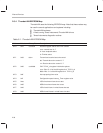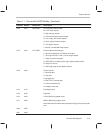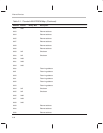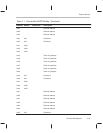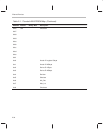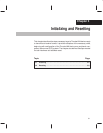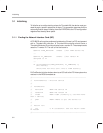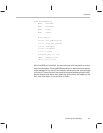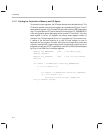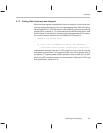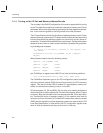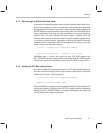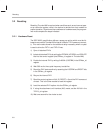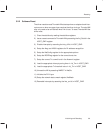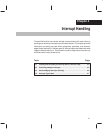
Initializing
3-4
3.1.2 Finding the Controller in Memory and I/O Space
To access the host registers, the I/O base address must be determined. This
I/O base is needed, since the host registers are accessed as I/O ports. The I/O
base address register in the ThunderLAN controller has the LSB hardwired to
high. This code does an O/S call to read a 32-bit word from PCI_MEMBASELO
in the configuration space belonging to this board’s PCI device ID. If the first
base register is not an I/O register, the second base register location is
checked. If an I/O base register is found, it is stored away in the structure nic.
If neither of the first two locations is a valid I/O base register, an error is
declared and the program is ended. Note that the configuration space was
originally supplied with a space request and the operating system as part of
the power-on self test (POST) supplied the card with sufficient address space
by filling in the RAM bits in the base registers.
#define PCI_MEMBASELO 0x10 //low memory base
address register
#define PCI_IOBASELO 0x14 //low I/O base address
register
...
nic.IoBase = PciRdWord(nic.DevId,PCI_MEMBASELO);
if (!(nic.IoBase & 1))
{
nic.IoBase = PciRdWord(nic.DevId,PCI_IOBASELO);
if (!(nic.IoBase & 1))
error(”PCI Config failed: Unexpected
non-I/O address found”);
}



